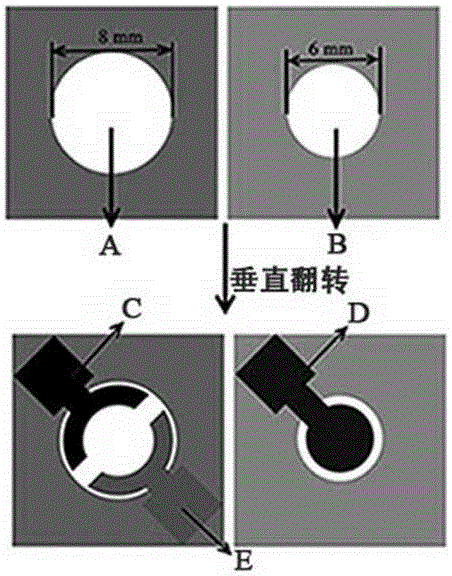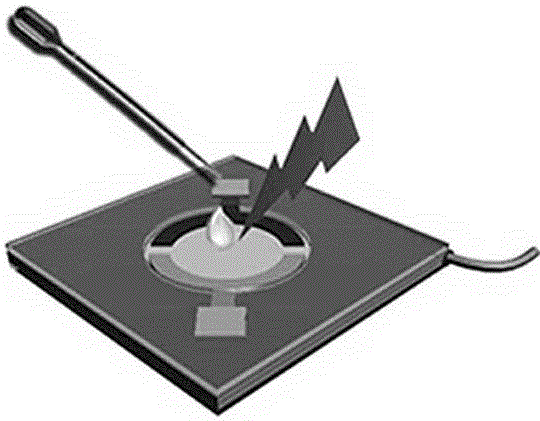Method for preparing molecularly imprinted paper chip sensor through click chemistry technology
A technology of molecular imprinting and chemical technology, which is applied in the preparation of photoelectrochemical paper chip sensors and the field of trace pesticide residues, can solve the problems of poor sensitivity, high reagent selectivity, quantitative determination accuracy and low sensitivity, etc., to improve selectivity and accuracy, high sensitivity and detection range, and the effect of achieving high-throughput screening
- Summary
- Abstract
- Description
- Claims
- Application Information
AI Technical Summary
Problems solved by technology
Method used
Image
Examples
Embodiment 1
[0042] Embodiment 1: the detection of methyl parathion
[0043] (1) Use Adobe Illustrator CS4 to design the hydrophobic wax printing pattern of the paper chip on the computer, place the cut paper in the wax spray printer, and print the hydrophobic wax printing pattern on the paper;
[0044] (2) Place the paper with the wax pattern in step (1) into a constant temperature oven and heat it at 90 degrees Celsius for 1.5 minutes;
[0045] (3) The electrode is printed by screen printing technology on the hydrophilic area of the paper-based material, and the working electrode is made of carbon paste, the reference electrode is made of Ag / AgCl paste and the counter electrode is made of carbon paste;
[0046] (4) Cut the batch of paper chips processed in step (3) into single paper chips, drop 10 μL of gold seed solution onto the hydrophilic area on the back of the printed working electrode, incubate for 1 hour, add 20 μL containing 1.2 mmol / L chloroauric acid, 2.0 A 10mmol / L phospha...
Embodiment 2
[0053] Embodiment 2: the detection of trichlorfon
[0054] (1) Use Adobe Illustrator CS4 to design the hydrophobic wax printing pattern of the paper chip on the computer, place the cut paper in the wax spray printer, and print the hydrophobic wax printing pattern on the paper;
[0055] (2) Place the paper with the wax pattern in step (1) into a constant temperature oven and heat it at 80 degrees Celsius for 2 minutes;
[0056] (3) The electrode is printed by screen printing technology on the hydrophilic area of the paper-based material, and the working electrode is made of carbon paste, the reference electrode is made of Ag / AgCl paste and the counter electrode is made of carbon paste;
[0057] (4) Cut the batch of paper chips processed in step (3) into single paper chips, drop 10 μL of gold seed solution onto the hydrophilic area on the back of the printed working electrode, incubate for 0.5 h, add 20 μL containing 1.2 mmol / L chloroauric acid, 2.0mmol / L cetyltrimethylammoni...
PUM
 Login to View More
Login to View More Abstract
Description
Claims
Application Information
 Login to View More
Login to View More - R&D
- Intellectual Property
- Life Sciences
- Materials
- Tech Scout
- Unparalleled Data Quality
- Higher Quality Content
- 60% Fewer Hallucinations
Browse by: Latest US Patents, China's latest patents, Technical Efficacy Thesaurus, Application Domain, Technology Topic, Popular Technical Reports.
© 2025 PatSnap. All rights reserved.Legal|Privacy policy|Modern Slavery Act Transparency Statement|Sitemap|About US| Contact US: help@patsnap.com


